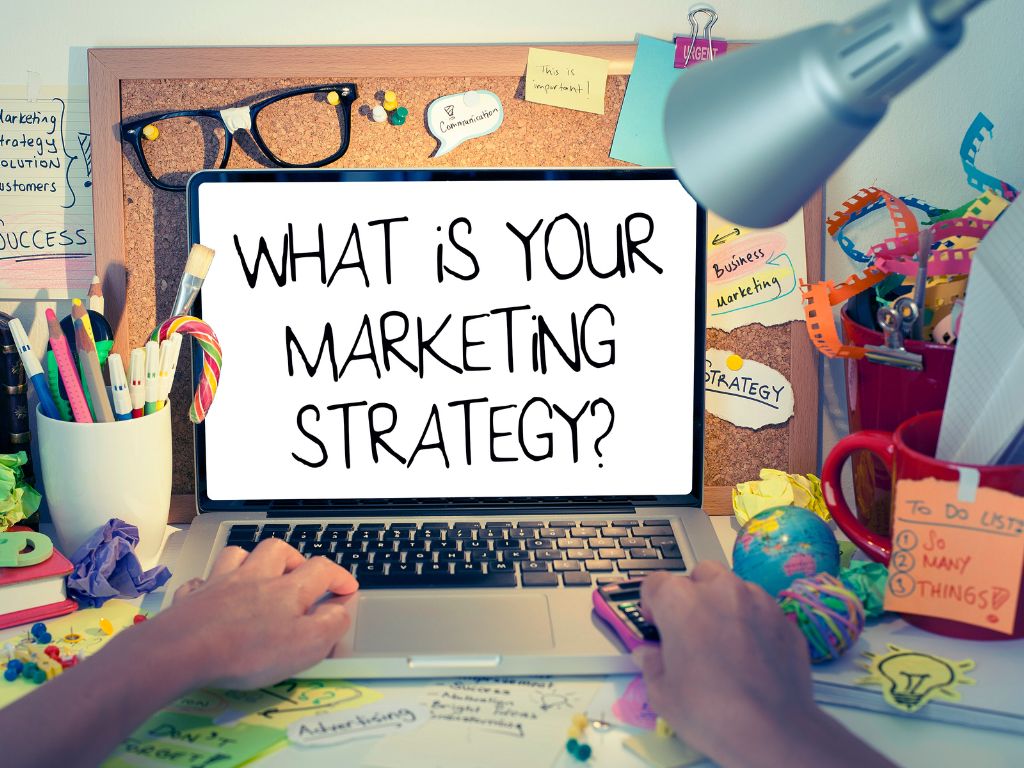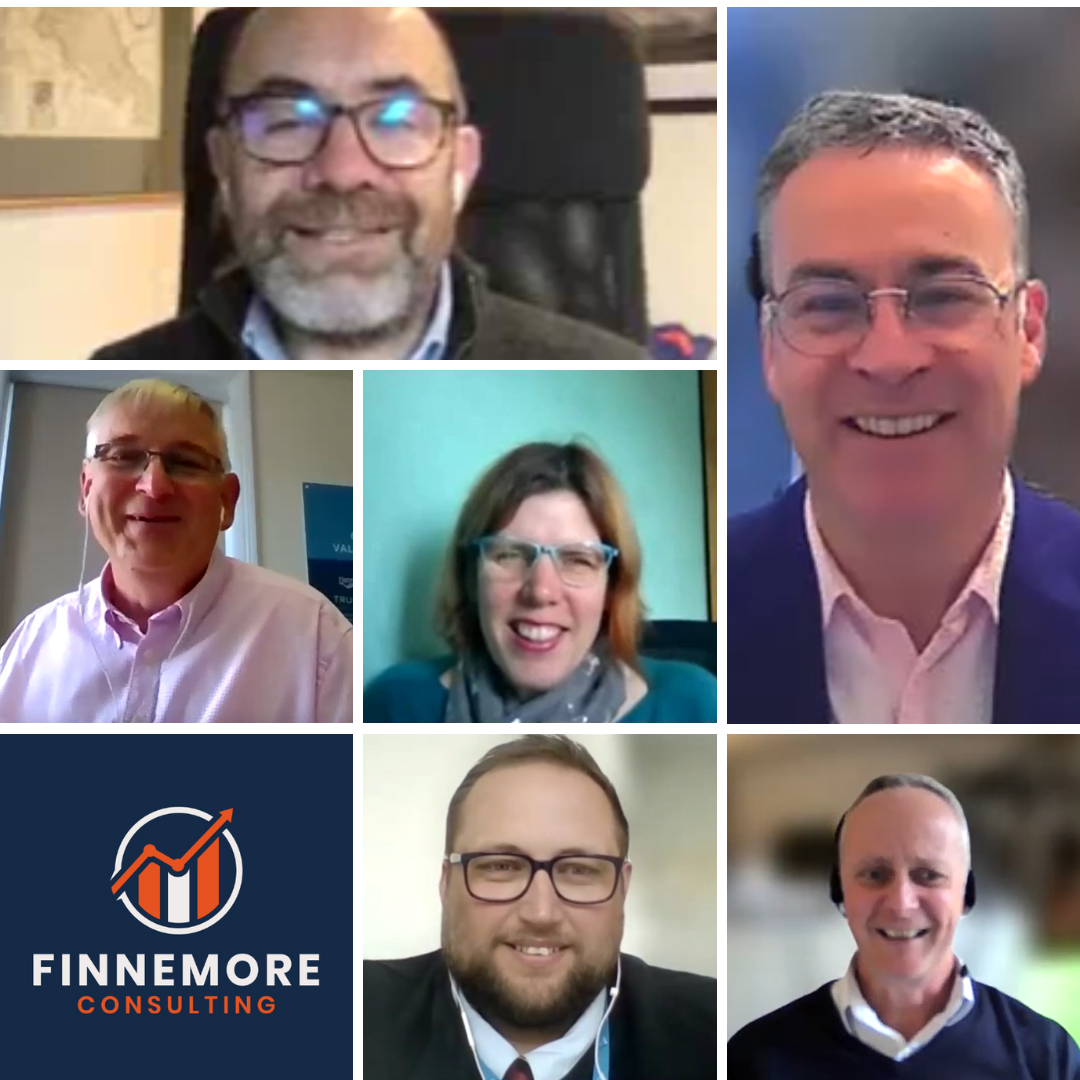Leveraging Customer Testimonials: Your Secret Weapon in Edtech



When you’re reaching out to people in the edtech field, it’s crucial to get your message right. Here’s a straightforward four-step plan to help you write emails and messages that hit the mark:
1. Understand and acknowledge their problems
Start by showing that you get what they’re going through and acknowledge the challenges they face in education or technology. This helps build trust and shows you’re genuinely interested in helping them.
2. Explain how you can help
Next, explain how your Edtech solution can solve their problems. Keep it simple, focus on the benefits, and avoid using technical language that might confuse them. Be clear about how your solution can make their lives easier.
3. Share proof of success
Back up your claims with real evidence. Share stories or data that show how your solution has helped others like them. This helps build credibility and makes your message more convincing.
4. Ask them to take action
Finally, tell them what you want them to do next. Whether it’s trying out your product or scheduling a demo, make it easy for them to take the next step. Be direct and clear about what you’re asking for.
The key is to keep it short, don’t over-explain, and make it about them and not you!

Creating a Marketing Strategy can feel complicated but it can essentially be boiled down into three stages:
In the first stage (the awareness stage) you’re literally just trying to make potential customers aware that you exist.
You’ve got a stellar product or service, but guess what? Nobody knows about it. That’s where the awareness stage comes into play. This is your chance to shout from the rooftops (metaphorically, of course) and let the world know that you exist.
But how do you do that? Well, it’s all about getting your name out there. Think social media campaigns, content marketing, and good old-fashioned networking. The goal here is simple: make potential customers aware of your presence in the market.
Remember, Rome wasn’t built in a day, and neither is brand awareness. It takes time and consistent effort to get noticed, so don’t get discouraged if you don’t see results overnight.
In the second stage (the consideration stage) you have to convince your customers to buy from you over your competition.
Okay, so you’ve piqued the interest of your target audience. Now what? It’s time to convince them that your offering is the best thing since sliced bread (or avocado toast, if that’s more your style).
This is where the consideration stage comes into play. Your potential customers are weighing their options, comparing you to your competitors, and trying to decide who to give their budget to.
But here’s the thing: it’s not just about having a killer product or service. It’s also about the experience you provide. Put yourself in your customers’ shoes for a moment. Would you rather buy from a company that treats you like just another number, or one that goes above and beyond to make you feel valued?
Customer experience is key. So don’t just focus on showcasing what you’re selling; focus on how you’re selling it. It makes all the difference.
The third stage (the retention stage) involves building community and convincing your customer to purchase again.
The retention stage is all about keeping your customers coming back for more. Why? Because repeat customers are the lifeblood of any business. Not only do they contribute to your bottom line, but they also serve as brand ambassadors, spreading the word and bringing new customers into the fold.
So how do you keep them coming back for more? Build a sense of community. Make your customers feel like they’re part of something bigger than themselves. Whether it’s through loyalty programs, exclusive offers, or simply engaging with them on social media, show them that you appreciate their business and value their loyalty.
Remember, a happy customer is a loyal customer. So don’t just focus on making the sale; focus on building relationships that last a lifetime.
These are the basic three stages you need to consider when creating your marketing strategy. Of course, there are tactics and activities that need to be planned and actioned to go with it but, strategically, this is a great blueprint.
Does your Marketing Strategy cover these three stages?

If you’re losing sales then it’s usually down to these very basic reasons (despite what sales gurus might tell you!):
1. You’re missing the mark on value.
If what you’re offering doesn’t solve a problem or make life easier for your customers, they’re not going to buy. It’s as simple as that.
2. You’re not really listening.
Ever been on the phone with a salesperson who just talks at you? Not fun. Listening to what the customer needs is the first step to making a sale.
3. You’re jumping the gun.
Nobody likes feeling rushed. Pushing for a sale before you’ve built any kind of relationship is a surefire way to turn people off.
4. You’re wasting time on dead ends
Not all leads are worth pursuing. Learn to spot the ones that are just going to waste your time.
5. You’re ignoring objections
Brushing off concerns instead of addressing them only makes the customer more hesitant. Take objections seriously and work through them.
6. You’re forgetting to follow up
Out of sight, out of mind. Don’t let prospects forget about you—follow up and stay on their radar.
7. You’re making things complicated
Keep it simple. A confusing sales process is a sure way to lose customers.
8. You’re pretending competitors don’t exist.
Know your enemy. No solution is so unique that it doesn’t have any competition. Ignoring the competition won’t make them go away—it’ll just leave you in the dust.
9. You’re blending in instead of standing out.
If you’re just another fish in the sea, why should anyone choose you? Find your unique selling point and shout it from the rooftops.
10. You’re skipping the relationship-building part.
People buy from people they like. Take the time to build relationships—it’ll pay off in the long run.
Losing sales feels awful but it’s not the end of the world. Learn from your mistakes, tweak your approach, and carefully rebuild your pipeline being mindful of the above.
Is there anything I’ve missed? What would you add?
#sales #selling #edtech #pipeline #relationships #closing #saleprocess #edtech

Whether you’re navigating interviews, Q&A sessions, or engaging in conversations with stakeholders, mastering the art of media training can be the key to success as it keeps the focus ON the things you want to talk about and AWAY from those you don’t.
Here are three key tips I learnt in media training to elevate your communication game:
1. Know your North Star
The key to a good Q&A is don’t answer the question you’re asked, answer the question you wish you were asked. If there’s a crucial message you want to get across, that’s your North Star. Practice answering questions that lead you back there.
Then if they keep commenting on something trivial or something you don’t know well, you can bring the conversation back to what matters.
2. Don’t speak for others.
If somebody says “You must be shocked by your competitors’ collapse” don’t take the bait. Instead say you’ll let that person comment on their situation, and then bring the conversation back to your area of focus.
3. Have command of two or three recent statistics that support your perspective.
You don’t need to be a walking encyclopaedia, but a few stats are very compelling. Make sure they are no more than two or three years old, and that you can cite your sources.
What More Can You Do?
While the strategies above are indispensable, there’s always room for refinement. Here are a few additional tips to enhance your performance during Q&A sessions and interviews:
4. Active Listening: Pay close attention to the questions posed to you. Understanding the intent behind each query allows you to tailor your responses more effectively.
5. Authenticity: Stay true to your brand and values. Authenticity resonates with audiences far more than rehearsed or scripted responses.
6. Bridge Techniques: Master the art of bridging—seamlessly transitioning from the question asked to the point you wish to convey. This technique allows you to maintain control over the conversation.
7. Practice, Practice, Practice: Like any skill, effective communication requires practice. Engage in mock interviews, seek feedback, and continuously refine your approach.
By harnessing these insights and refining your communication skills, you’ll be better equipped to give interviews which drive your vision forward with clarity and conviction.
What else would you add? What do you find helps when you’re involved in Q&A sessions or interviews?

It’s a well-known good practice to do your research before you meet with a potential customer. Spending some time understanding them so you can have a decent conversation with them when you meet goes a long way and shows you’re serious about them. The question is: how much is too much?
When selling in education, I worked with a guy for several years who made a point of researching the schools we were due to meet with; he wanted to come across as a ‘trusted advisor’ as opposed to a salesperson. However, he would take it far too far and spend the meeting quoting their school motto at them, discussing their school trips and questioning their exam results; they didn’t feel like he had done his research, they felt like they were being stalked! It ended up having the opposite effect and the staff would become suspicious and back away – it rarely ended in a successful sale.
If you veer too far into the realm of over-research, you’ll likely give your potential clients the creeps rather than impressing them. Striking the right balance is the key to a successful client meeting. Here’s how you can do it:
The key to successful customer meetings lies in a balanced approach to research. While thorough knowledge is valuable, your customers ultimately want you to be an expert in your own field, not theirs.
So, be curious, be prepared, but most importantly, be attentive and adapt to your customer’s unique needs. By doing so, you’ll forge more genuine connections and create a stronger foundation for successful sales relationships.

The So What? test is nothing new but I thought it would be worth covering here as it’s something I have discussed with a number of people this week.
If you’re unfamiliar with the So What? test then there are lots of great books out there on it but, in essence, it is the practice of looking at your messaging and asking yourself “so what?” Are you talking about what matters most to your audience? The idea is to help you focus on what’s important to your client base and communicate effectively as a result.
To give you an example, how many presentations have you seen that start with an introductory slide listing facts about the company? A typical first slide will usually contain some company facts along the lines of:

While these facts are important to your company, the client’s response will probably be so what? So you were established in 2012, so what? Why is that important to me?
It’s crucial to always look through your messaging, and particularly opening slides such as these where this will often be your first contact with your potential client, and ask yourself so what? And keep asking yourself so what until you get to a satisfactory answer.
So, for the example above, let’s do the So What? Test on the first bullet point
So what? Well, it means we’ve been in business for a few years now.
So what? So we’re not going anywhere, we’re established and have a good reputation.
So what? Customers can trust us.
By asking so what you can usually find a better way of getting that message across. In the case of the above, a much stronger opening bullet point would have been something along the lines of:
Try it with the other bullet points and see what you come up with. Try it with your own messaging and share the results. I know this has helped lots of companies in the past so hopefully, it will help yours too.

I keep reading that Sales is something people get into ‘accidentally’.
Apparently people don’t set out to do it but before you know it you find yourself in a role where you get to earn some lovely commission . . . but have to make dreaded calls and meet a ‘too high’ target to get it.
Is that really true for everyone??
My first job after uni was a for a finance company in the underwriting department. I was green as hell so knew nothing about business at all. Once I’d been there a few months I’d gotten a feel for what bits of a business does what . . . and I knew at that point I wanted to get into Sales.
Being the person who wins the new business to keep a company moving forward was, to me, the most interesting role by far. And creating something out of nothing sounded amazing!
So I started at the beginning on a telesales desk and have worked in all sorts of ways with all sorts of clients. It’s been brilliant all the way and there’s still loads more I want to do. I definitely chose to go into Sales.
What about you? I’d love to hear how my sales connections found themselves where they are.
It can’t all be accidental 😉

There’s been a huge amount of change in the school MIS sector in the last 5 years. The make-up of MIS market share is completely turning on its head, and the landscape continues to move towards one where academisation dominates and the number of maintained schools gets smaller each year.
It can feel like a scary time for a lot of teams; over the years some have ceased to exist as they just weren’t sustainable for their local authorities. Others have grown and gotten stronger, sometimes joining up with neighbouring teams or striking out on their own as separate commercial entities. The school support market continues to be an exciting market with lots of opportunities – something many private equity companies can see as they acquire in this sector.
We’re often asked what’s next for support teams, so in this blog, we’ve outlined what to avoid and what to try and focus on instead.
While it may not be possible to make all these changes immediately, it’s worth having a plan for what the edtech and school management landscape might look like in 3-5 years’ time. What will your value and unique offer be as a team? Will your revenue be dependent on certain suppliers and, if so, what are the potential consequences? Owning your own destiny is about ensuring your revenue is not tied to suppliers, but instead to all the value your offer outside of product support.
Being able to achieve revenue from school management suppliers via favourable licence deals, rebates and referral fees has been the traditional model for some time. However, it’s a risky strategy for support teams in the future:
So how will you adapt your team and your business to be a truly agnostic and independent partner to your schools? Here are our ideas:
As a support team, you are still your schools’ no. 1 point of contact for most things and will often have a close relationship with them spanning many years (or even decades!). This is so important to schools; these strong relationships are built on trust and there are many ways you can ensure their best interests are at the centre of what you do:
It’s hard to survive as a team if you only offer IT support, even harder if your support is limited solely to MIS. There are tons of technology-enabled systems and services required by schools and only a fraction of these is usually delivered within an MIS (see below):

Consider:
Support Teams offer so much to schools, academies and Trusts in the way that they help reduce friction for them. You can do everything from uncovering awareness of needs, understanding their portfolio of all solutions and making recommendations and driving usage, to helping the procurement process, supporting transitioning and onboarding, ensuring MATs/schools are getting the greatest value from the solution and supporting schools to hit their climate and net-zero targets.
Owning your own destiny is about ensuring the revenue you generate is in your hands, not the hands of product suppliers. There are tons of brilliant ideas out there which will help make it a possibility; in this blog, we’ve listed just a few but we’re always happy to share best practices so get in touch if you’d like to discuss.

We’ve been privileged to speak with even more industry thought leaders this academic year as part of our #FinnemoreFireside chats, and the insight they provide us and our community is invaluable.
So thank you to Edtech NED, legislator, schools and education expert Jim Knight for your thoughts on the disconnect between the education and labour market, and the need for a school system which truly meets the needs of learners, communities and employers.
Thanks to Derek Hills from Ark for sharing your views on where you see AI fitting into technology budgets and the broader education landscape, and what the future of MIS might be.
Thank you Matt Woodruff for an insightful conversation about how technology can support more effective decision-making at all levels to improve outcomes and identify ways to be able to ‘do more, with less’ – more important than ever in today’s economic climate.
Thanks to Catherine Tallis of HFL Education, a long-standing provider of MIS support to schools, for discussing the ways in which support teams must adapt as the MIS market continues to evolve.
Thank you to Chris Kirk of CJK Associates Ltd for your insight into MAT’s needs in terms of vision, strategy, operating models and governance, and what this means for suppliers – both now and in the future.
And finally, we were delighted to welcome back Martin Baker of The Safeguarding Company for a follow-up chat about the lessons that can be learnt from the Child Q case. A challenging topic and we really appreciate you sharing your experience.
Nick and I have thoroughly enjoyed making the series and already have a great session ready to go in the new term from Lyndon Stickley and Sam Curtis at iplicit. Ollie Burnett from the school support team in Coventry will also be joining us to talk about all the valuable ways they support their schools, including helping them procure and migrate to their new MIS Bromcom as a group earlier this year. Watch this space!
Have a great summer break everyone 🌞
Customer testimonials are one of THE biggest marketing tools you can have in your kitbag when it comes to selling in the education sector as peer-to-peer advocacy is everything.
Here’s why you should ask for them and share them:
1. They build trust.
Testimonials from satisfied customers serve as social proof, building trust and credibility in your brand. Potential customers are more likely to trust the experiences of their peers.
2. They help you win new business.
Positive testimonials showcase your product’s value proposition and demonstrate real-world benefits. They can be powerful tools in persuading potential customers to choose your EdTech solution over competitors.
3. They help you retain customers.
Happy customers are your best advocates. Sharing their positive experiences not only reinforces their loyalty but also encourages retention by highlighting the value your platform delivers.
If you don’t already, start gathering and sharing customer testimonials to increase brand presence and drive growth.
It’s #testimonialtuesday today so why not share one in the comments straight away! 👇